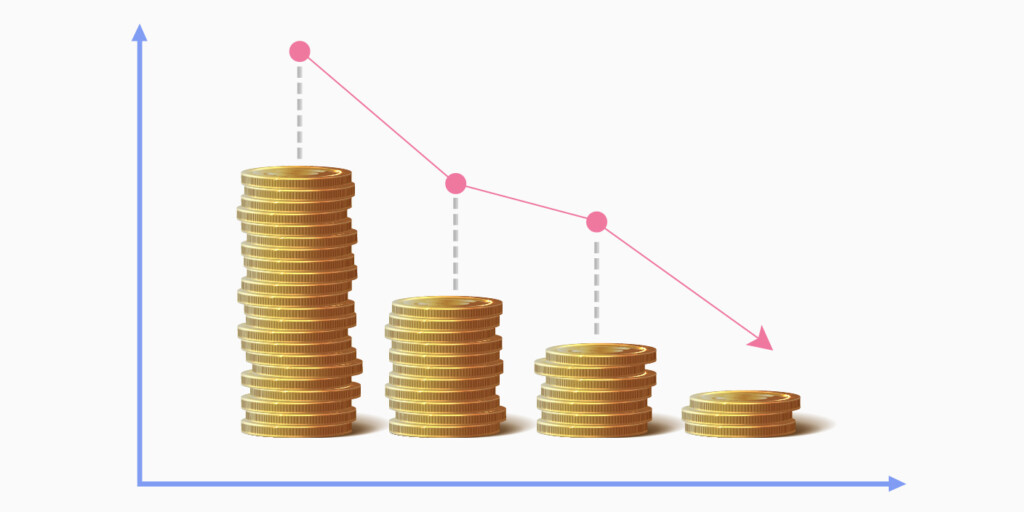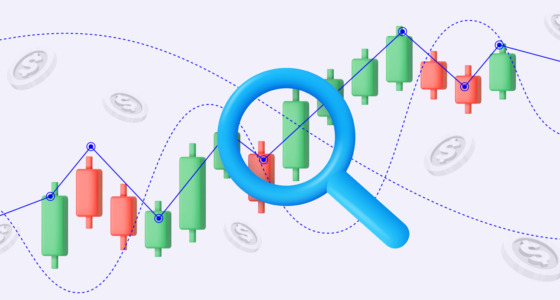

The Martingale system has been used for centuries to increase the odds of winning and minimize losses. In fact, it’s been used in some surprising ways. In the 1950s, a researcher Marian Breland set up a system where the raccoons had to perform increasingly complex actions in order to earn their food rewards, which was inspired by the Martingale strategy. That was a huge success, and the raccoons were highly motivated to learn and perform the new tasks.
This application shows how versatile and adaptable this approach can be. The basic premise of the strategy is fairly simple, but there’s still a lot to learn. Let’s dive into the specifics of the Martingale strategy for managing positions in the financial markets.
What is Martingale?

The origins of the Martingale strategy date back to 18th century France, where it was commonly used in games of chance. The strategy was named after John Henry Martindale, a British casino owner who popularized the approach in the 19th century. He didn’t create it, but the name caught on.
The approach traveled far and wide, making it into the trading world. The original idea remained the same, though—the goal of the Martingale strategy is to increase the odds of succeeding and minimize losses. It involves doubling your trade size after each loss, hoping to eventually recoup all your losses.
The strategy is based on the concept of probability. It assumes that if you continue to trade with the same approach, you will have a successful trade that is big enough to cover all your previous losses. This is a highly debated topic—whether financial markets actually turn in your favor in the long run. For now, let’s hold off on the criticism and focus on the practical aspects of using Martingale.
Example of a Martingale strategy

To understand the Martingale strategy more easily, it’s helpful to consider a trade where there are two possible outcomes with equal probabilities – one positive and one negative.
Let’s say a trader starts with a fixed trade size of $50 and hopes to get a positive outcome. Unfortunately, they face the negative outcome and lose the trade. However, instead of giving up, the trader decides to increase the trade size to $100 and try again, hoping for a positive outcome. This time isn’t much better—they still get the negative outcome, resulting in a $100 loss.
Following the Martingale strategy, the trade size now gets doubled to $200. The process continues until the trader achieves the desired outcome. It may involve losing the first two trades but then succeed (lose $50, lose another $100, and get $200). It can be losing the first three trades and nailing the fourth trade (lose $50, lose $100, lose $200, and finally get $400).
As you can see, the Martingale strategy promises to recover all previous losses. However, the trader must have unlimited funds to continue doubling the trade size after each loss.
Example in trading: a hypothetical scenario
Here is how the Martingale strategy can be applied to the currencies market. Currencies tend to follow trends that last for extended periods. The Martingale strategy can be useful in this context because it allows traders to lower their average entry price by doubling down on trades. As a result, even if the price drops significantly, you can still break even, and it will require a smaller movement in the price to do so.
Let’s say you opened a position with two lots of the EUR/USD currency pair at a price of 1.2630. In this case, you’re hoping for the price to rise from 1.2630 to 1.2640 before you can break even. However, the market takes a downturn to 1.2610. And now, you have the option to add more lots. With four lots at 1.2610, you only need the currency pair to climb to 1.2625 instead of the original 1.2640 to break even.
When you add more lots to your position, your average entry price goes down. If you go with this move, the market would need to move less in your favor for you to break even. Bear in mind that although the market could eventually turn in your favor, it may not happen soon enough for you to continue adding more lots with the funds you have available.

What is reverse Martingale?

The reverse Martingale is also known as the Paroli system and serves as an alternative to the Martingale strategy. In this strategy, instead of doubling the trade after profits and losses, you double your trade after every success and halve after every loss. The idea is to ride on the top-scoring streaks; although the question of whether they exist is also highly debated.
Here is an example of a reverse Martingale trade. Suppose a trader starts with a fixed trade size of $50 and succeeds with their first trade. In the next trade, they will double the trade size to $100. If they succeed again, the trade size will be doubled to $200, and so on. After the third successful trade, their trade size is now $400.
Generally, the reverse Martingale is considered a safer option for traders with smaller accounts. But there is still a risk of losing trades and potential drawdowns.
Drawbacks of implementing the Martingale trading strategy
You should realize that Martingale isn’t a surefire way to make profits in trading. It’s high-risk, and there are several serious drawbacks:
- Requires a large amount of capital – The Martingale strategy demands a lot of capital to handle the skyrocketing trade sizes. If a trader has a smaller account size, they may be forced to quit while they’re still losing.
- Risk of large drawdowns – In many instances, traders will find themselves dramatically increasing their trade size in an attempt to recover their losses. Markets can experience long periods of unfavorable conditions. And these periods may put traders through substantial losses.
- Psychological stress – The psychological stress that comes with implementing the Martingale strategy can be overwhelming. Just imagine what it feels like to increase your trade size dramatically after yet another loss. You could be driving yourself to burnout and potentially costly mistakes.
- Not suitable for some trading styles – This approach could potentially work in markets with high volatility and short-term price movements. But it’s definitely not a good fit for those who have a more patient, long-term trading style.
Conclusion
The Martingale strategy in trading is certainly an interesting tool for managing positions. But it’s important to use it with caution and be aware of its potential drawbacks. Doubling your trade after each loss can quickly lead to large losses if the market conditions do not align with your expectations. There is no guarantee that you will eventually recoup all your losses.
Sources:
Martingale strategy – overview, how it works, drawbacks, Corporate Finance Institute
Robust analysis of the martingale hypothesis, ScienceDirect









